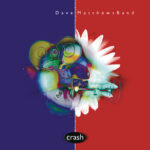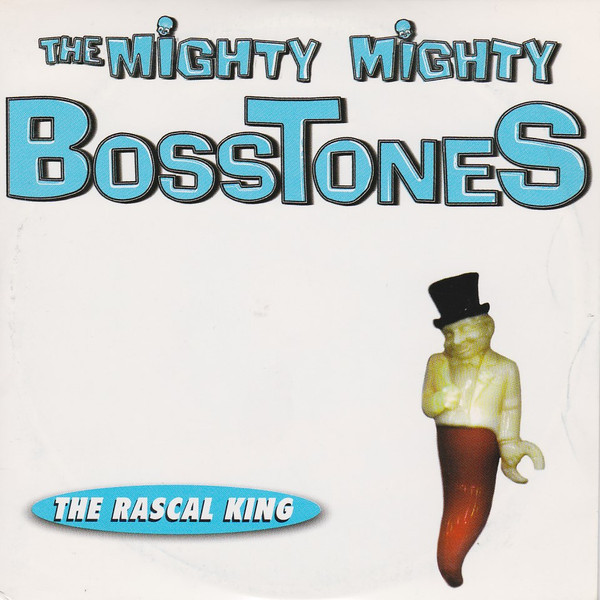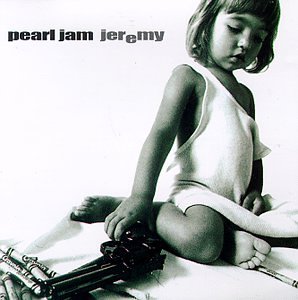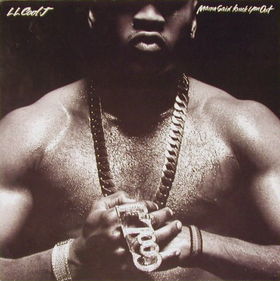 Dave Matthews Band’s “Lie in Our Graves” is one of the defining tracks of the 1990s jam-rock and alternative scene, a song that exemplifies the group’s unique blend of lyrical introspection, intricate musicianship, and expansive sonic landscapes. Featured on their 1996 breakthrough album Crash, “Lie in Our Graves” stands as a quintessential example of the band’s ability to fuse technical precision with raw emotional power. Nearly three decades after its release, the song continues to resonate with fans, illustrating the enduring appeal of Dave Matthews Band’s innovative approach to songwriting and performance.
Dave Matthews Band’s “Lie in Our Graves” is one of the defining tracks of the 1990s jam-rock and alternative scene, a song that exemplifies the group’s unique blend of lyrical introspection, intricate musicianship, and expansive sonic landscapes. Featured on their 1996 breakthrough album Crash, “Lie in Our Graves” stands as a quintessential example of the band’s ability to fuse technical precision with raw emotional power. Nearly three decades after its release, the song continues to resonate with fans, illustrating the enduring appeal of Dave Matthews Band’s innovative approach to songwriting and performance.
At its heart, “Lie in Our Graves” is a meditation on mortality, love, and human connection, framed through sweeping musical passages that mirror the vast emotional terrain of the lyrics. The track is both a high-energy rocker and a reflective anthem, blending elements of funk, jazz, and folk-rock into a cohesive whole. Its dynamic shifts, lyrical depth, and improvisational potential make it a hallmark of DMB’s catalog, showcasing the band’s capacity for creating music that is both thought-provoking and viscerally engaging.
Origins and Context
Dave Matthews Band emerged in the early 1990s as a distinct voice in the alternative and jam-band scenes, combining Matthews’ unique vocal timbre and poetic lyricism with the technical virtuosity of his bandmates. By the time Crash was released in 1996, the band had already cultivated a devoted following through live performances, known for their energetic shows, extended jams, and improvisational interplay.
“Lie in Our Graves” was conceived during a period when the band was exploring themes of life, mortality, and the human condition, blending these weighty topics with uplifting grooves and compelling melodies. The song reflects Matthews’ interest in capturing both personal reflection and universal experience, delivering lyrics that encourage introspection while the music drives toward catharsis and communal energy.
The track also illustrates the band’s emphasis on collective creativity. Each member of DMB—Carter Beauford (drums), Stefan Lessard (bass), Boyd Tinsley (violin), and LeRoi Moore (saxophone)—brings distinctive musical voices, contributing to a texture that is simultaneously complex, cohesive, and emotionally resonant. “Lie in Our Graves” exemplifies how their collaborative approach allows for interplay between melody, rhythm, and improvisation, producing a soundscape that is expansive yet intimate.
Musical Structure and Style
Musically, “Lie in Our Graves” is notable for its intricate arrangement and rhythmic complexity. The song opens with Matthews’ percussive acoustic guitar, a hallmark of his playing style, establishing both rhythmic drive and harmonic structure. The guitar’s syncopated strumming provides momentum, creating a foundation for the layers of instrumental interplay that follow.
The track is in a moderate 4/4 time signature, yet Beauford’s drumming introduces polyrhythmic elements and dynamic accents, enhancing the sense of movement and unpredictability. The rhythm section, anchored by Lessard’s fluid bass lines, provides both stability and melodic counterpoint, highlighting the interplay between groove and harmonic development.
Tinsley’s violin and Moore’s saxophone add melodic depth, weaving in and out of the vocal lines with counter-melodies, harmonies, and occasional improvisational flourishes. These instruments expand the sonic palette, creating an almost orchestral texture within the framework of a rock song. The combination of acoustic and electric elements, along with layered vocals and instrumental complexity, contributes to the track’s expansive, almost cinematic feel.
The song structure itself balances repetition and variation, featuring verses, choruses, instrumental breaks, and dynamic shifts that build toward climactic peaks. This design allows for both lyrical storytelling and musical exploration, providing space for improvisation and showcasing the band’s technical virtuosity without overshadowing the emotional core of the track.
Lyrics and Thematic Exploration
“Lie in Our Graves” is lyrically rich, exploring themes of mortality, intimacy, and the value of living fully. The song opens with lines that immediately establish its philosophical underpinnings:
“It’s not wise to speak of your secrets
Before you can trust”
These words emphasize caution, reflection, and emotional honesty, setting the stage for a broader meditation on human connection. Matthews’ lyrics often juxtapose the temporal with the eternal, contemplating life’s fleeting nature while celebrating the depth of shared experience.
The chorus—one of the song’s most memorable moments—echoes with the idea of laying down burdens and embracing life’s impermanence:
“Lie in our graves for a while
Lie in our graves for a while”
This refrain functions as both a literal and metaphorical call to surrender, inviting listeners to consider the inevitability of death while embracing the vitality of the present. The song’s lyrical depth encourages introspection, prompting audiences to reflect on personal relationships, priorities, and the fleeting nature of existence.
Beyond mortality, the lyrics explore the interconnectedness of human experience. Lines about trust, love, and shared vulnerability underscore a central theme: that emotional honesty and connection are essential to a life well-lived. Matthews’ poetic phrasing balances specificity and universality, creating lyrics that feel intimate yet broadly relatable.
Instrumentation and Arrangement
The instrumentation of “Lie in Our Graves” exemplifies the Dave Matthews Band’s signature approach: layered, dynamic, and interdependent. Each instrument contributes to the overall narrative, whether through harmonic support, melodic counterpoint, or rhythmic interplay.
Matthews’ acoustic guitar serves as the harmonic and rhythmic anchor, driving the song forward while allowing space for instrumental conversation. Beauford’s drumming is both precise and expressive, blending subtlety with power to enhance the emotional arc of the song. Lessard’s bass provides a melodic anchor, often engaging in counterpoint with the guitar and supporting improvisational passages by the horns and violin.
Tinsley’s violin adds an expressive, almost human voice to the mix, capable of both soaring melodies and intricate harmonic embellishments. Moore’s saxophone complements this texture, contributing warmth, depth, and occasional bursts of improvisational intensity. The combination of these elements produces a dynamic, multi-dimensional soundscape that is both structured and fluid.
The song’s arrangement also emphasizes tension and release. Instrumental passages build momentum, creating climactic peaks that echo the lyrical themes of surrender, reflection, and emotional release. This dynamic interplay is central to the song’s enduring impact, offering listeners an experience that is both cerebral and visceral.
Production and Sound Engineering
Lie in Our Graves was recorded with an emphasis on clarity, balance, and the natural interplay of the ensemble. The production highlights the acoustic warmth of Matthews’ guitar, the resonance of Tinsley’s violin, and the subtle tonal shading of Moore’s saxophone, ensuring that each instrument is both distinct and integrated into the overall texture.
Vocal layering is carefully managed to maintain intimacy while supporting the band’s harmonic complexity. The mix allows for dynamic variation, with crescendos and decrescendos reflecting the song’s emotional trajectory. Subtle reverb and spatial effects create depth, enhancing the sense of openness and cinematic scope.
The recording approach emphasizes authenticity and live energy. By capturing the musicians’ interactions and improvisational responsiveness, the production preserves the spontaneity that defines much of DMB’s appeal, allowing listeners to feel the immediacy and vitality of the performance.
Influence and Reception
Upon its release, “Lie in Our Graves” received acclaim from fans and critics alike. Reviewers highlighted the song’s lyrical depth, instrumental complexity, and dynamic range, often citing it as a centerpiece of Crash. Its themes of mortality, love, and human connection resonated with audiences, helping solidify the Dave Matthews Band’s reputation as a band capable of blending introspective songwriting with expansive musical arrangements.
The song has since become a fan favorite, frequently performed in live settings with extended improvisation, highlighting its adaptability and the band’s willingness to explore musical nuances in real time. Its influence extends to subsequent jam bands and improvisational rock acts, many of whom cite DMB’s approach to layered arrangements, dynamic interplay, and thematic depth as inspirational.
Musical Analysis
From a technical standpoint, “Lie in Our Graves” is notable for its rhythmic sophistication, harmonic layering, and melodic interplay. The guitar and rhythm section establish a groove that is simultaneously steady and syncopated, providing a foundation for melodic improvisation. Tinsley and Moore contribute harmonic and melodic flourishes that create depth and contrast, while Matthews’ vocals maintain focus and emotional clarity.
The song’s dynamic structure—alternating between quieter verses and expansive instrumental passages—demonstrates the band’s mastery of tension and release. Harmonic choices emphasize modal interplay and subtle key shifts, reinforcing the song’s thematic focus on reflection and emotional exploration. The interplay between instruments highlights the band’s improvisational skill, with each member responding to the others in a musical conversation that evolves organically over the course of the track.
Emotional Resonance and Cultural Significance
“Lie in Our Graves” resonates emotionally because it addresses universal human experiences: mortality, love, vulnerability, and connection. Its lyrical and musical elements work together to create an immersive experience that encourages reflection, empathy, and emotional engagement.
Culturally, the song exemplifies the mid-1990s trend of introspective alternative rock blended with improvisational influences from jazz, funk, and folk. DMB’s approach to composition and performance helped define a generation of jam-rock bands, demonstrating that commercially viable music could also be artistically ambitious and emotionally profound.
The song’s enduring appeal lies in its balance of accessibility and complexity. Listeners can enjoy the immediate groove and melodic hooks while delving into deeper thematic and musical layers, making it a versatile and lasting contribution to the rock canon.
Legacy and Enduring Impact
Lie in Our Graves remains a defining track in the Dave Matthews Band catalog. Its combination of lyrical introspection, instrumental virtuosity, and dynamic arrangement has made it a favorite among both long-time fans and new listeners discovering the band’s work. The song exemplifies the DMB ethos: music that is technically impressive, emotionally resonant, and capable of connecting deeply with audiences.
Its influence can be seen in subsequent generations of jam bands and improvisational rock acts, many of whom draw inspiration from the song’s layered arrangements, thematic depth, and balance of structure and improvisation. Lie in Our Graves serves as a template for creating music that is both personal and universal, structured yet open-ended, contemplative yet exhilarating.
The song’s longevity is also a testament to the band’s commitment to musical growth and exploration. Over decades of performance and recording, Lie in Our Graves has remained a centerpiece of DMB’s repertoire, demonstrating the enduring power of well-crafted, emotionally honest music.
Conclusion: Expansive Rock and Emotional Truth
“Lie in Our Graves” by Dave Matthews Band stands as a masterful example of expansive rock music, combining lyrical depth, instrumental sophistication, and dynamic interplay into a track that is timeless in both its artistry and emotional impact. Its exploration of mortality, love, and human connection resonates universally, offering listeners an immersive experience that is intellectually engaging and emotionally cathartic.
The song’s layered instrumentation, intricate arrangement, and dynamic shifts exemplify the band’s technical prowess, while Matthews’ vocals and lyricism provide clarity, intimacy, and narrative focus. Its balance of improvisational freedom and compositional structure demonstrates DMB’s ability to create music that is both complex and accessible, reflective and celebratory.
Lie in Our Graves endures not only as a highlight of Crash but as a landmark in modern rock, illustrating the potential of music to explore profound themes while engaging the listener in a visceral, emotional journey. It is a testament to the Dave Matthews Band’s skill, vision, and enduring relevance, reminding audiences that music can expand horizons, stir the soul, and create moments of shared human experience that linger long after the final note fades.


